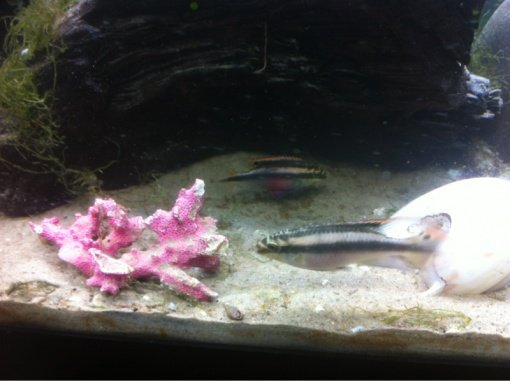Cornstar
Aquarium Advice FINatic
After removing my other tropical fish, leaving only my 2 kribensis and my albino bn pleco, my female kribensis started hiding in this cave.
After a week of hiding, I decided to check if there were any eggs on the roof and found none. As they continued to hide, I decided to check again and noticed a lot of orange eggs on the floor. I think I startled them because the male kribensis attacked me and made a little cut on my hand. I was wondering if it was normal to have eggs on the floor (sand) and how long should I wait until it hatches?
Also, I have many MTS that come out at night, should I worry that they'll eat the eggs? I am also afraid that my emperor 400 might suck the fries when they start to swim around, I currently covered the intake tube with my girlfriend's stocking.
And I will leave the eggs alone now that I am sure my kribensis are not sick.
After a week of hiding, I decided to check if there were any eggs on the roof and found none. As they continued to hide, I decided to check again and noticed a lot of orange eggs on the floor. I think I startled them because the male kribensis attacked me and made a little cut on my hand. I was wondering if it was normal to have eggs on the floor (sand) and how long should I wait until it hatches?
Also, I have many MTS that come out at night, should I worry that they'll eat the eggs? I am also afraid that my emperor 400 might suck the fries when they start to swim around, I currently covered the intake tube with my girlfriend's stocking.
And I will leave the eggs alone now that I am sure my kribensis are not sick.

